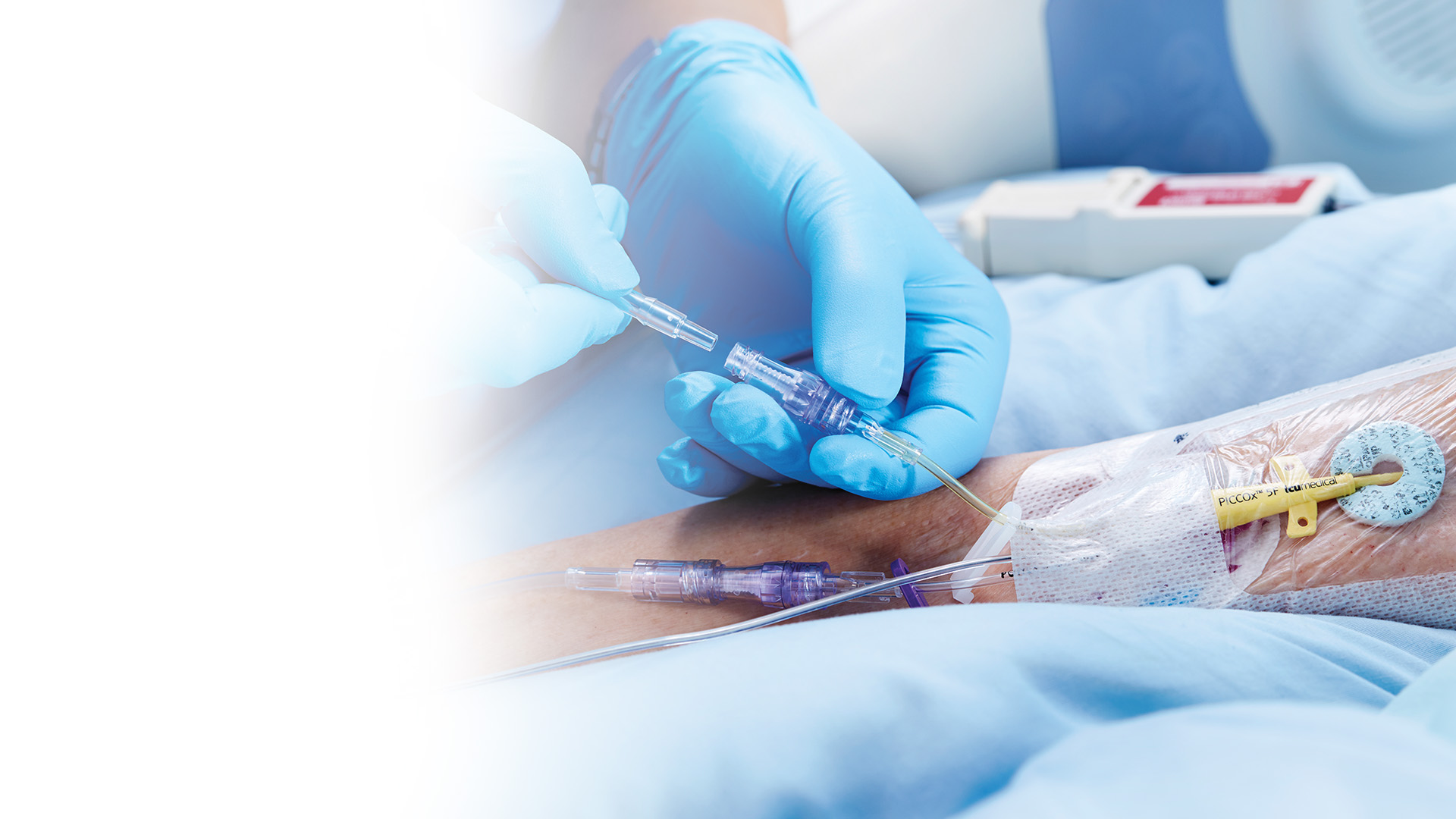TriOx®-PICC
Minimally Invasive Venous Oximetry Sensor
Earlier ScvO2 monitoring with TriOx-PICC may lead to earlier diagnosis, earlier decisions, and earlier treatment.
- Avoid delays in treatment or medication delivery.
- Avoid costly and time-consuming placement of a central line.
- Minimize infection risks and other CVOC-related complications
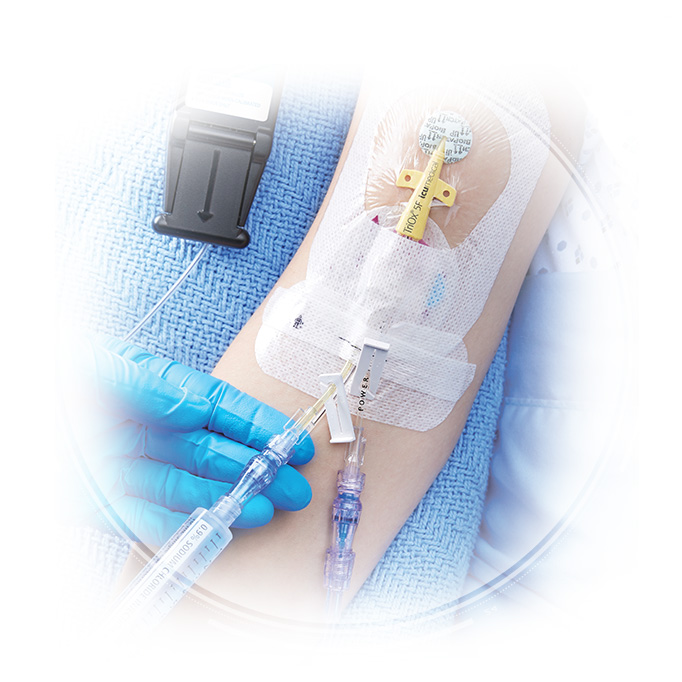
TriOx-PICC gives you the least invasive, most affordable way to monitor ScvO2
When it comes to monitoring your critically ill patients’ ScvO2, the sooner the better.
Monitoring changes in ScvO2 can help you identify and react quickly to signs of hemodynamic crisis, rather than waiting to respond to late indicators of instability. Putting our clinically proven three-wavelength oximetry technology into a less invasive PICC line that connects to the Cogent™ 2-in-1 hemodynamic monitoring system means you can now get access to your critically ill patients’ oxygenation status earlier in their care, while avoiding many of the risks and costs associated with more invasive central venous or pulmonary artery catheter placement.

Monitor Continuous ScvO2 Less Invasively
and more cost-effectively than with traditional central venous catheters (CVC) or pulmonary artery catheters (PAC).
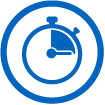
Rapidly Deliver Fluids
and medications or draw blood samples for laboratory testing through two high-pressure infusion lumens.

Can Be Placed by a Trained RN
in a variety of clinical settings where placement of a more invasive CVC or PAC might not be feasible.
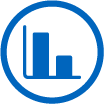
Half The Cost
of competitive central venous oximetry catheters (CVOC) while providing more accurate ScvO2 measurements.
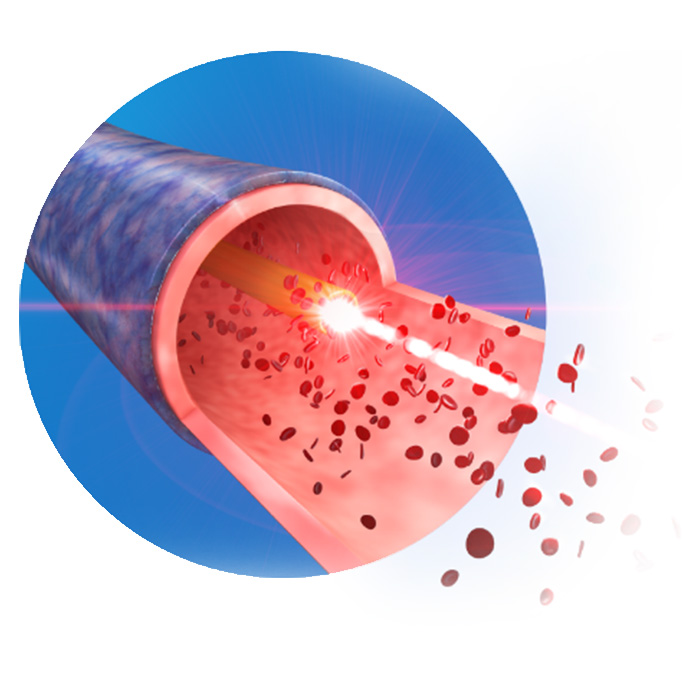
Proven 3-Wavelength Oximetry Technology
Clinically proven to respond more accurately to changes in oxygenation levels
than 2-wavelength technologies.
Filters artifact caused by cell orientation, vessel wall reflections, and changes in pH.
Avoid daily hemoglobin-based calibrations necessary with 2-wavelength technologies.
With TriOx-PICC, you can affordably monitor ScvO2 in more places and in more patients than ever before
Minimally invasive ScvO2 monitoring gives you a more complete picture of your patients’ oxygenation status and provides earlier warning of tissue hypoxia, while giving you more immediate feedback on the effectiveness of therapies.
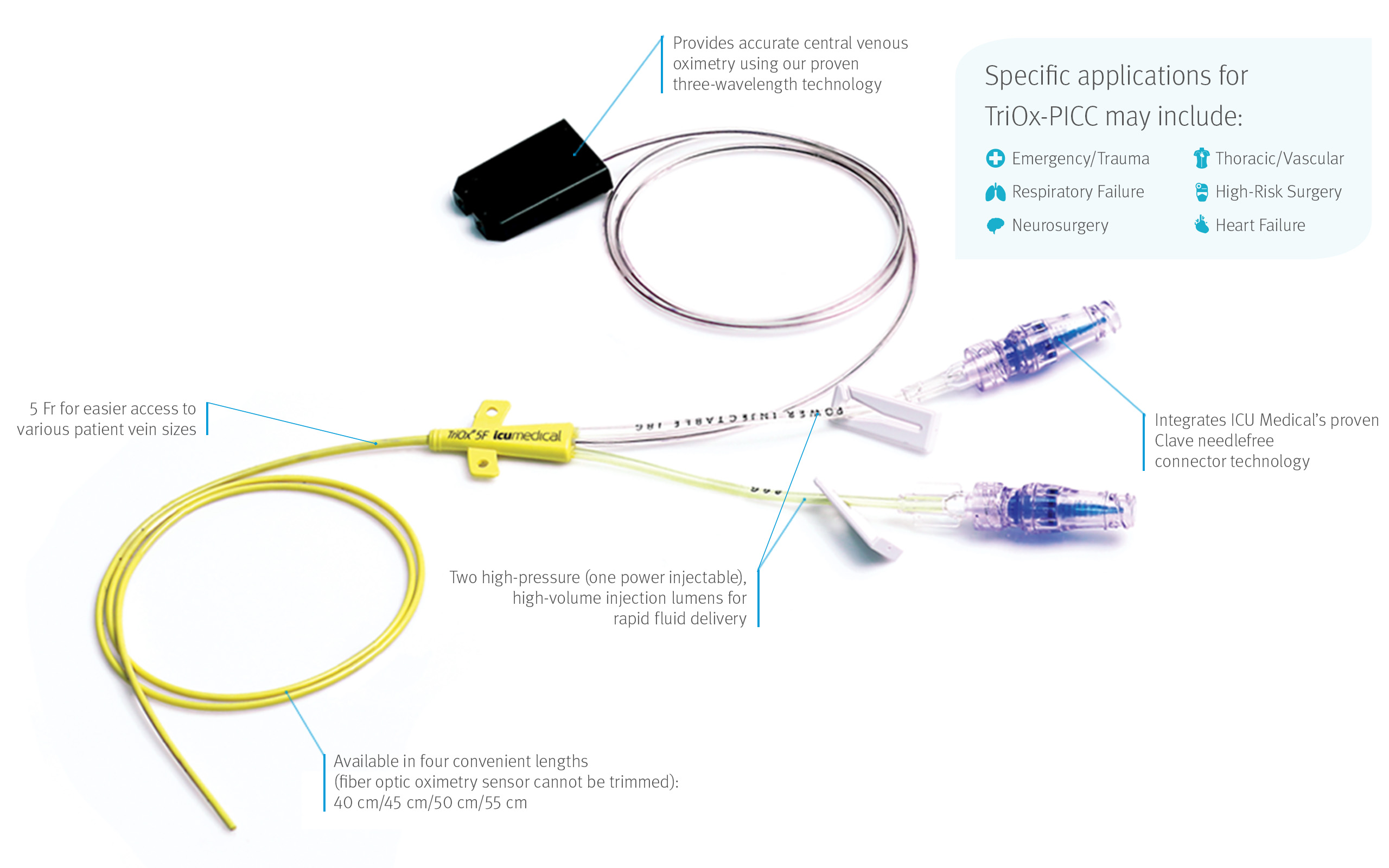
Product inquiry
Please enter your details into the following form.
References
Caution: Federal (USA) law restricts this device to sale by or on the order of a physician or other licensed practitioner.
